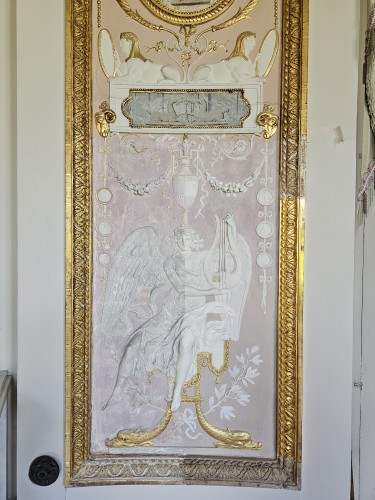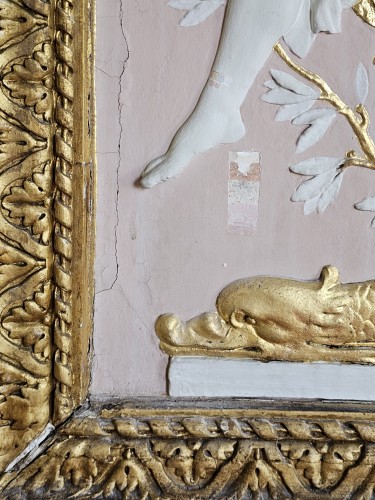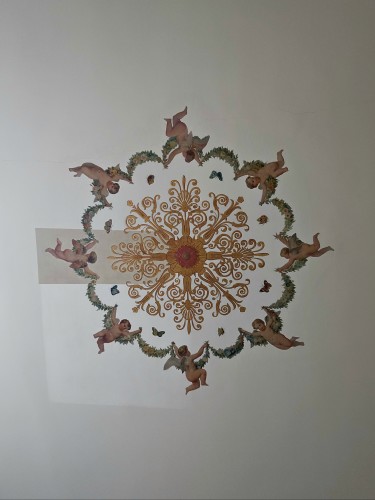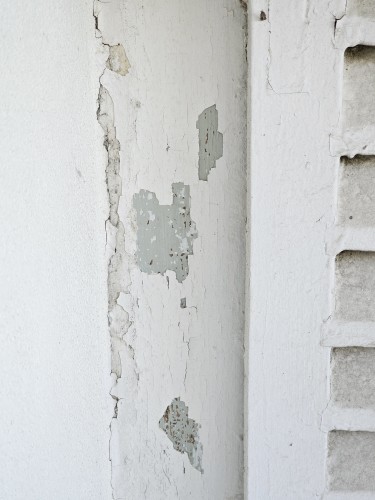
Revealing the past: how stratigraphy guides the restoration of the Bagatelle castle
26 October 2023In the effort to restore the Bagatelle castle, various tools come into play to recapture its former appearance. Allow us to introduce you to stratigraphy.
The Bagatelle castle, which the Mansart Foundation is restoring, is an architectural testament of the 18th century that must be preserved. However, the passage of time has left its mark on the walls. As a result, the restoration of this historically rich interior requires a deep understanding of its past. This is where stratigraphy comes into play, an effective method that allows us to rediscover the original colors and details that will restore the richness of the castle's decor.
Stratigraphy: steps and significance
Stratigraphy is a technique that involves analyzing the layers of materials superimposed within a structure, in our case, the various layers of paint and coatings on the walls and ceilings of the castle. Similar to the archaeology of the art, its purpose is to reveal the temporal layers of creativity that have transformed this space over the centuries.
The stratigraphic analysis begins with the careful sampling of these layers. These samples are then examined in a laboratory. By studying the pigments, materials, and techniques used in each layer, we can go back in time and reconstruct the artistic history of the castle.
Each layer of paint and coating teaches us more. Some colors, techniques, and patterns can be linked to specific periods in the construction and decoration of the castle. For instance, this technique has allowed us to rediscover the original colors of walls in the music room. Today, white figures are depicted over a pink background, and there is a significant amount of gilding, but this corresponds to a romanticized vision of the 18th century.
The importance and challenges of restoration
Stratigraphy plays a crucial role in the restoration of the castle. By finding the original colors and patterns, we can restore the castle's interiors in accordance and respect of its history. Originally, the music room's walls leaned more towards violet and gray-blue, while the gilding was less abundant and it was applied with gold leaf. Furthermore, despite our preconceived ideas about colors, the boudoir ceiling was not white, as one might think, but of a taupe color. This study of materials and colors allows us to preserve the authenticity and integrity of the monument while reviving its splendor.
Restoration based on stratigraphy can present some challenges, especially in the ethical realm. Sample collection must be done carefully to minimize potential damage to the artwork. Sometimes, the original color reveals itself, as was recently the case during the restoration of the Trianon. The Trianon, built from 1872 to 1873 by Sir Richard Wallace, located near the Château de Bagatelle, had white shutters until then. During the restoration, the paint on the shutters peeled off to reveal the same blue color present on the castle's shutters.
Thanks to stratigraphy, we are confident in our ability to restore the Bagatelle castle to its former appearance. Stratigraphy is much more than just a scientific technique. It is a window into the artistic past, a valuable tool for preserving the authenticity of historical monuments and sharing their stories with future generations.
© Photos : all rights reserved



